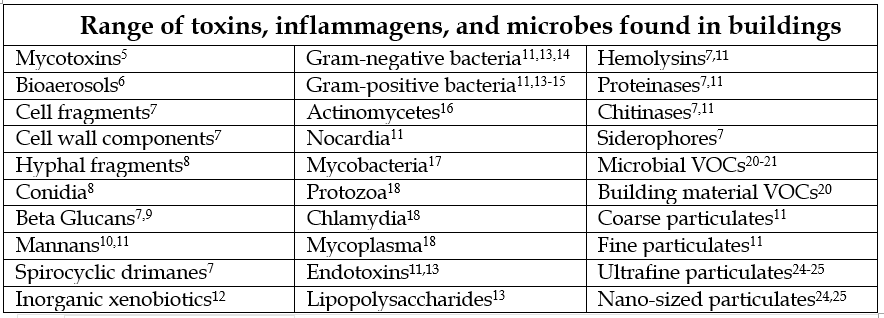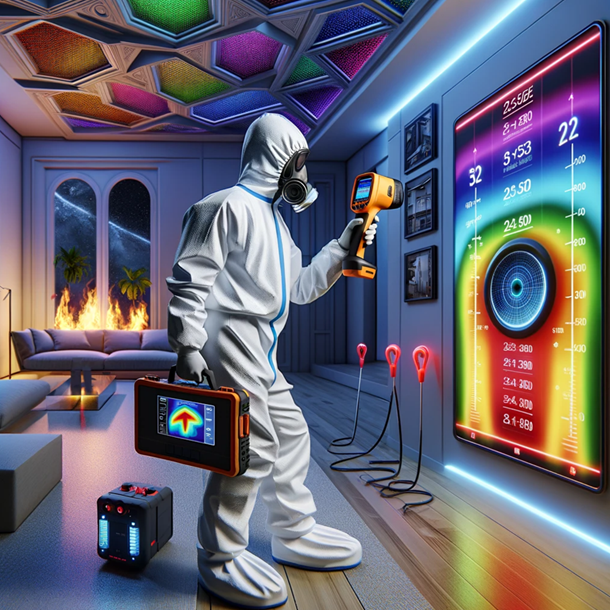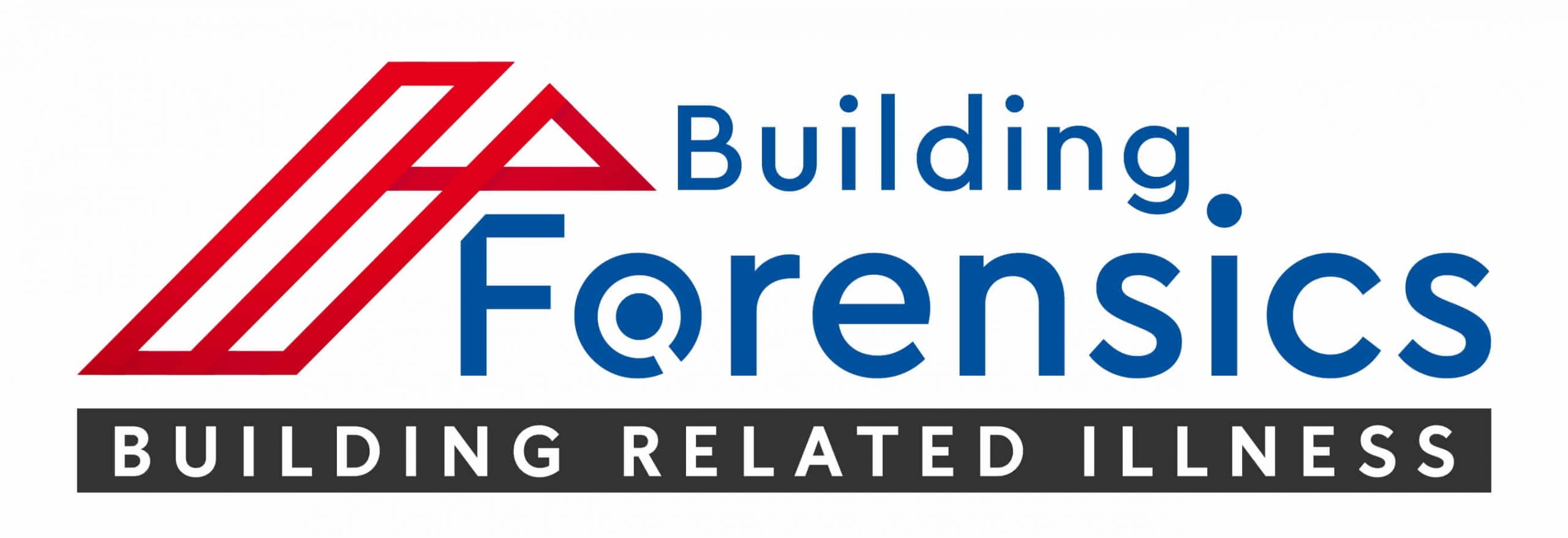Assesments
Basic Investigation parameters
We provide a comprehensive approach for evaluating and addressing potential health risks associated with building environments. We emphasize the importance of recognizing symptoms that may indicate an inflammatory response due to exposure to various toxins, inflammagens, and microbes found in buildings. This approach involves a mix of self-assessment and professional evaluation, aiming to identify and mitigate the sources of such exposure.
In this approach we assist you to follow the industry best practice regimes but have developed new protocols to supplement and exceed usual outcome. Some of this information may be surplus to your requirements especially if you can’t action them due to funding or limited medical support.
Many of our clients self-assess or obtain professionals medical & functional medicine practitioners. The following list shows typical symptoms of building occupants who might be suffering inflammatory response. Five or more are a red flag.
Symptoms Identifcation
♦Fatigue ♦Weakness ♦Aches ♦Muscle Cramps ♦Unusual Pain ♦Ice Pick Pain ♦Headache ♦Light Sensitivity ♦Red Eyes ♦Blurred Vision ♦Tearing ♦Sinus Problems ♦Cough ♦Shortness of Breath ♦Abdominal Pain ♦Diarrhoea ♦Joint Pain ♦Morning Stiffness ♦Memory Issues ♦Focus/Concentration Issues ♦Word Recollection Issues ♦Decreased Learning of New Knowledge ♦Confusion ♦Disorientation ♦Skin Sensitivity ♦Mood Swings ♦Appetite Swings ♦Sweats (especially night sweats) ♦Temperature Regulation or Dysregulation Problems ♦Excessive Thirst ♦Increased Urination ♦Static Shocks ♦Numbness ♦Tingling ♦Vertigo ♦Metallic Taste ♦Tremors
Source of Exposure
The following table shows typical inflammagens often found in buildings


1. Assessment Protocol:
- Encourages occupants to review the duration of their symptoms in relation to their occupancy of the property.
- Suggests differentiating between chronic and acute issues based on symptom onset.to their occupancy of the property.
- Advises on comparing symptoms among different occupants.
- Recommends specific tests to assess exposure levels, including blood and urine tests for mycotoxins and other relevant analyses, while advising against RAST tests which is a low cost allergy test and not a toxicology assessment .
2. Investigation and Testing:
- The approach includes a preliminary review of symptoms and medical or laboratory findings.
- An in-depth investigation of the home is proposed to identify potential triggers, such as TILT (Toxicity Induced Loss of Tolerance), and to assess exposure to various hazards.
- The process involves conducting various biological and chemical tests to pinpoint the sources of exposure.
3. Cost Consideration:
4. Conclusion and Recommendations:
- The protocol is tailored based on the information provided by the client, with the final report offering analysis, risk and hazard interpretation, and recommendations.
- It is noted that while Mould Masters can provide detailed analysis and recommendations, medical advice should be sought from professional healthcare providers.
- If budget or resources are not available Mould Masters will point their clients in the direction of professional medical and functional medicine assistance
